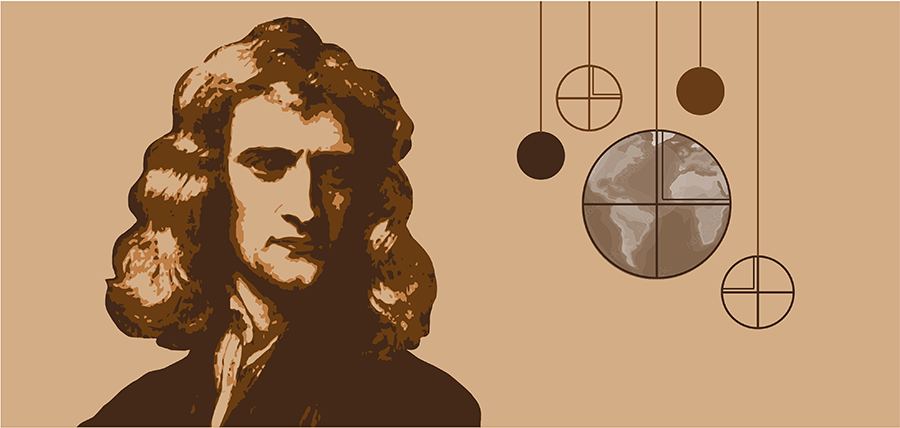Miguel Ohnesorge at APS:
 Newton began his quantitative derivation of Earth’s figure in 1686, after learning about work by the French physicist Jean Richer. In 1671, Richer had traveled to Cayenne, the capital of French Guiana in South America, and experimented with a pendulum clock. Richer found that the clock, calibrated to Parisian astronomical time (48°40’ latitude), lost an average of 2.5 minutes per day in Cayenne (5° latitude). This was surprising, but it could be explained by the theory of centrifugal motion, recently developed by Christian Huygens: The theory suggested that the centrifugal effect is strongest at the equator, so the net effective surface gravity would decrease as you moved from Paris to Cayenne[1].
Newton began his quantitative derivation of Earth’s figure in 1686, after learning about work by the French physicist Jean Richer. In 1671, Richer had traveled to Cayenne, the capital of French Guiana in South America, and experimented with a pendulum clock. Richer found that the clock, calibrated to Parisian astronomical time (48°40’ latitude), lost an average of 2.5 minutes per day in Cayenne (5° latitude). This was surprising, but it could be explained by the theory of centrifugal motion, recently developed by Christian Huygens: The theory suggested that the centrifugal effect is strongest at the equator, so the net effective surface gravity would decrease as you moved from Paris to Cayenne[1].
Newton accepted Huygens’s theory but realized it meant something strange: If Earth is a sphere and its centrifugal effect is strongest at the equator, gravity would vary across Earth’s surface, and the ocean would bulge up at the equator — a proposition that Newton considered absurd.
To resolve this, he proposed that the solid Earth had behaved like a fluid throughout its formation, gradually bulging up at the equator because of the centrifugal effect. He proposed modeling planets as rotating fluids in equilibrium, where the planet’s shape is stable while the force generated by its rotational motion, and the gravitational attraction between its particles, acts on it[2].
More here.
